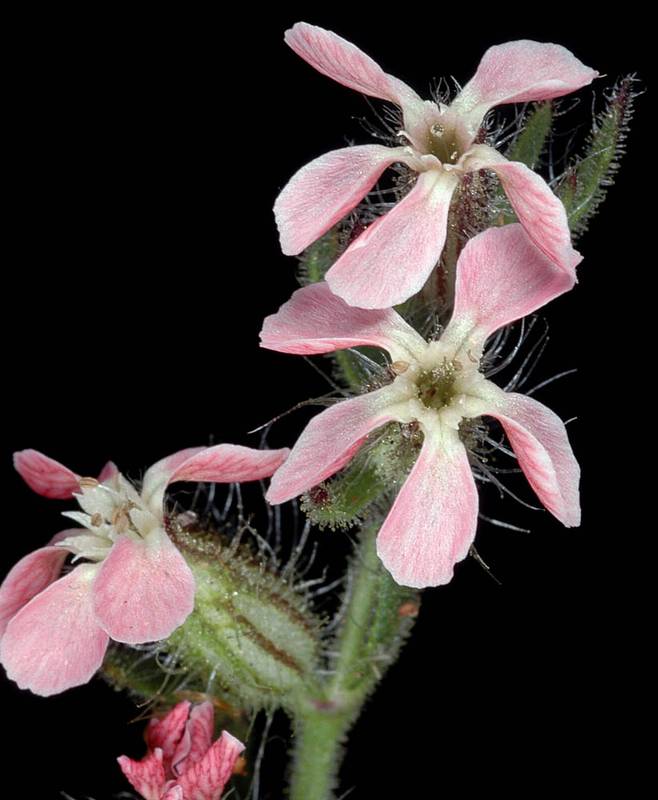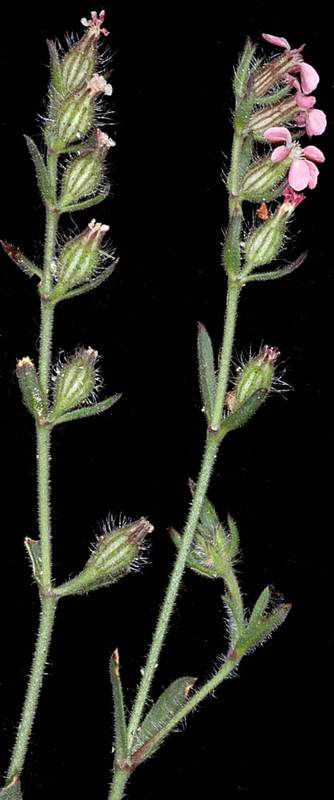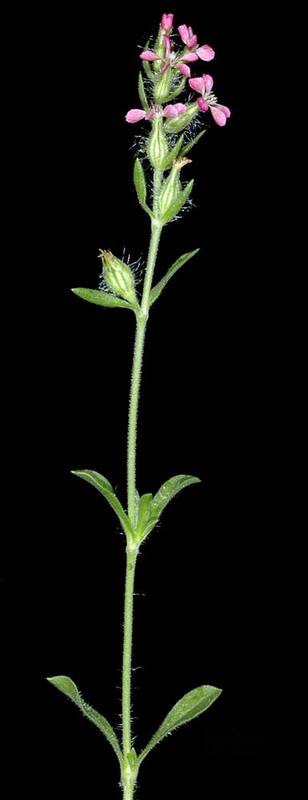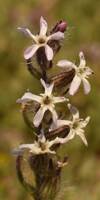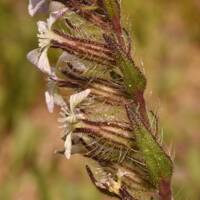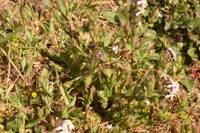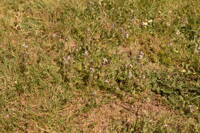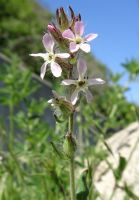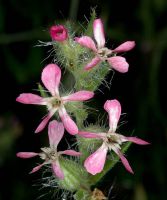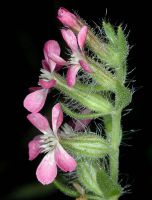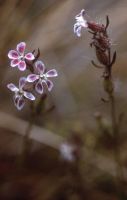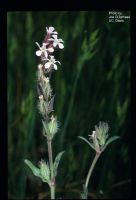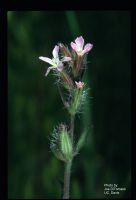Distribution: Occurring west of the Cascades crest in lowland western Washington; British Columbia to California, east to the Rocky Mountains; also in eastern North America.
Habitat: Weed of disturbed soil and wasteland.
Flowers: May-July
Origin: Introduced from Europe
Growth Duration: Annual
Conservation Status: Not of concern
Pollination: Self-pollination, moths, hummingbirds
Annual, the stems simple or branched, 1-4 dm. tall, conspicuously pubescent with stiff, white hairs, glandular-pubescent above.
Leaves opposite, the few basal leaves oblanceolate to spatulate, broadly petiolate; cauline leaves narrower, 1.5-4 cm. long and 2-8 mm. broad.
Flowers several to numerous in a simple to compound, leafy-bracteate raceme; calyx tubular, 5-lobed, 10-nerved, 6-9 mm. long, inflating in fruit, constricted at the orifice, glandular-pubescent, with stiff hairs up to 2 mm. long; petals 5, whitish to pink, lavender, or deep purple; claw of the petal narrow, 4-6 mm. long, the blade elliptic-obovate, usually entire, slightly twisted, making the corolla look like a pinwheel; blade appendages 2, linear, entire, 1 mm. long; ovary stalk 1 mm. long; stamens 10; styles 3.
Capsule 3-celled.
Publication: Sp. Pl. 1: 417. 1753.
PNW Herbaria: Specimen records of Silene gallica in the Consortium of Pacific Northwest Herbaria database
WA Flora Checklist: Silene gallica checklist entry
OregonFlora: Silene gallica information
E-Flora BC: Silene gallica atlas page
CalPhotos: Silene gallica photos

